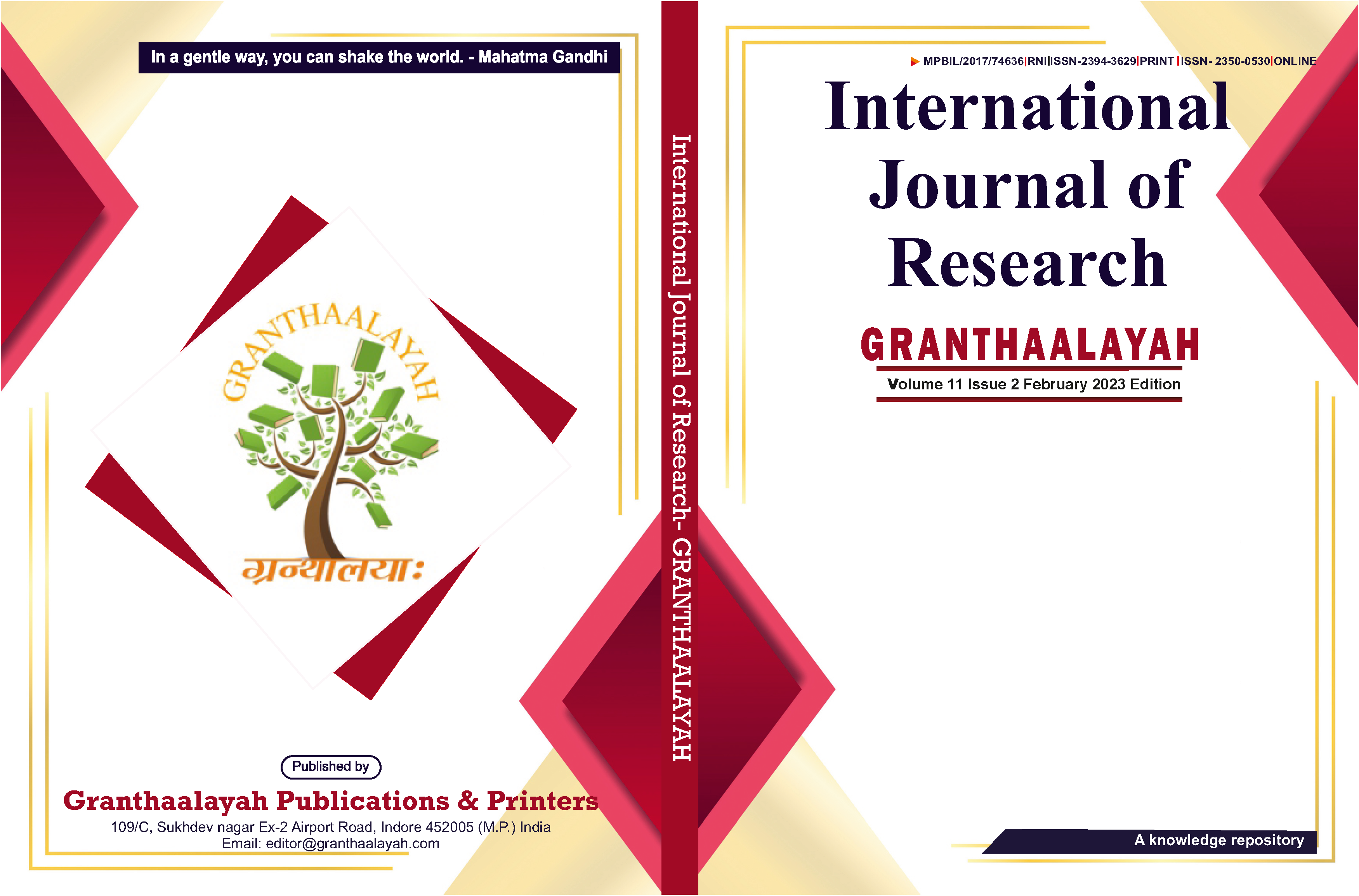GRAPHS WITH THE BURNING NUMBERS EQUAL THREE
DOI:
https://doi.org/10.29121/granthaalayah.v11.i2.2023.5057Keywords:
Burning Sequence, Maximum Degree, Burning NumberAbstract [English]
The concept of burning number is inspired by the firefighting problem, which is a new measure to describe the speed of information spread. For a general non-trivial connected graph
Downloads
References
Alon, N., Prałat, P., and Wormald, N. (2009). Cleaning Regular Graphs with Brushes. SIAM Journal on Discrete Mathematics, 23(1), 233-250. https://doi.org/10.1137/070703053. DOI: https://doi.org/10.1137/070703053
Balogh, J., Bollobás, B., and Morris, R. (2012). Graph Bootstrap Percolation. Random Structures and Algorithms, 41(4), 413-440. https://doi.org/10.1002/rsa.20458. DOI: https://doi.org/10.1002/rsa.20458
Barghi, A., and Winkler, P. (2015). Firefighting On a Random Geometric Graph. Random Structures and Algorithms, 46(3), 466-477. https://doi.org/10.1002/rsa.20511. DOI: https://doi.org/10.1002/rsa.20511
Bessy, S., Bonato, A., Janssen, J., Rautenbach, D., and Roshanbin, E. (2017). S0166218X17304353. Bounds on the Burning Number. Discrete Applied Mathematics, 232, 73-87. https://doi.org/10.1016/j.dam.2017.07.016. DOI: https://doi.org/10.1016/j.dam.2017.07.016
Bonato, A., Janssen, J., and Roshanbin, E. (2014). Burning a Graph as a Model of Social Contagion. Lecture Notes in Computer Science, 8882, 13-22. https://doi.org/10.1007/978-3-319-13123-8_2. DOI: https://doi.org/10.1007/978-3-319-13123-8_2
Bonato, A., Janssen, J., and Roshanbin, E. (2016). How To Burn a Graph. Internet Mathematics, 12(1-2), 85-100. https://doi.org/10.1080/15427951.2015.1103339. DOI: https://doi.org/10.1080/15427951.2015.1103339
Bonato, A., Janssen, J., and Roshanbin, E. (2015). Burning a Graph is Hard. https://doi.org/10.48550/arXiv.1511.06774
Bonato, A., and Nowakowski, R. J. (2011). The Game of Cops and Robbers on Graphs. American Mathematical Society. https://doi.org/10.1090/stml/061. DOI: https://doi.org/10.1090/stml/061
Finbow, S., King, A., Macgillivray, G., and Rizzi, R. (2007). The Firefifighter Problem For Graphs of Maximum Degree Three. Discrete Mathematics, 307, 2049-2105. https://doi.org/10.1016/j.disc.2005.12.053. DOI: https://doi.org/10.1016/j.disc.2005.12.053
Finbow, S., and Macgillivray, G. (2019). The Firefighter Problem: A Survey of Results, Directions And Questions. Australasian Journal of Combinatorics, 43, 57-77.
Liu, H., Zhang, R., and Hu, X. (2019). Burning Number of Theta Graphs. Applied Mathematics and Computation, 361, 246-257. https://doi.org/10.1016/j.amc.2019.05.031. DOI: https://doi.org/10.1016/j.amc.2019.05.031
Mitsche, D., Prałat, P., and Roshanbin, E. (2018). Burning Number of Graph Products. Theoretical Computer Science, 746, 124-135. https://doi.org/10.1016/j.tcs.2018.06.036. DOI: https://doi.org/10.1016/j.tcs.2018.06.036
Mitsche, D., Prałat, P., and Roshanbin, E. (2017). Burning Graphs-A Probabilistic Perspective, Arxiv :1505.03052. Graphs and Combinatorics, 33(2), 449-471. https://doi.org/10.1007/s00373-017-1768-5. DOI: https://doi.org/10.1007/s00373-017-1768-5
Roshanbin, E. (2016). Burning A Graph as a Model of Social Contagion [Phd Thesis]. Dalhousie University.
Sim, K. A., Tan, T. S., and Wong, K. B. (2018). On the Burning Number of Generalized Petersen Graphs. Bulletin of the Malaysian Mathematical Sciences Society, 41(3), 1657-1670. https://doi.org/10.1007/s40840-017-0585-6. DOI: https://doi.org/10.1007/s40840-017-0585-6
Published
How to Cite
Issue
Section
License
Copyright (c) 2023 Wen Li

This work is licensed under a Creative Commons Attribution 4.0 International License.
With the licence CC-BY, authors retain the copyright, allowing anyone to download, reuse, re-print, modify, distribute, and/or copy their contribution. The work must be properly attributed to its author.
It is not necessary to ask for further permission from the author or journal board.
This journal provides immediate open access to its content on the principle that making research freely available to the public supports a greater global exchange of knowledge.

























